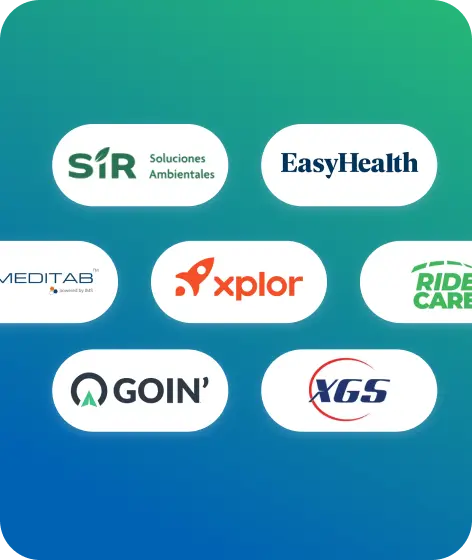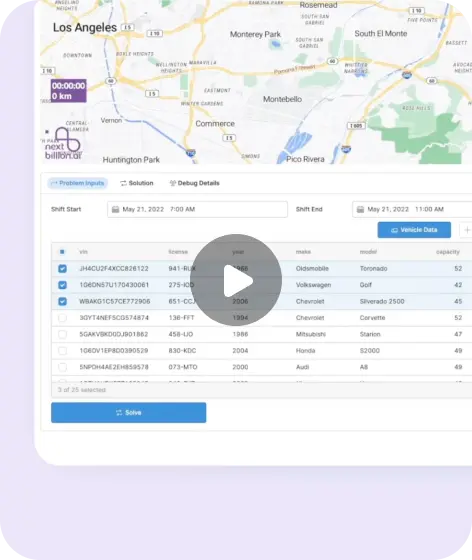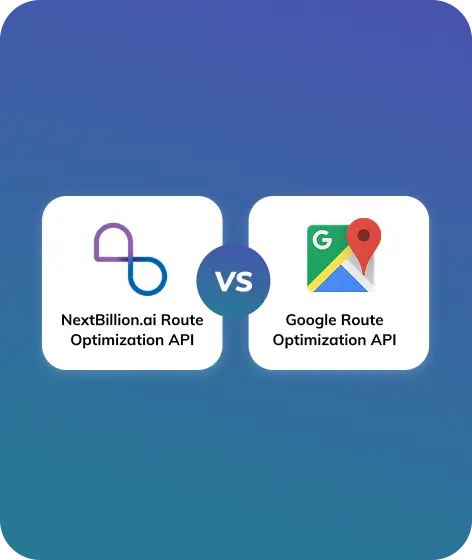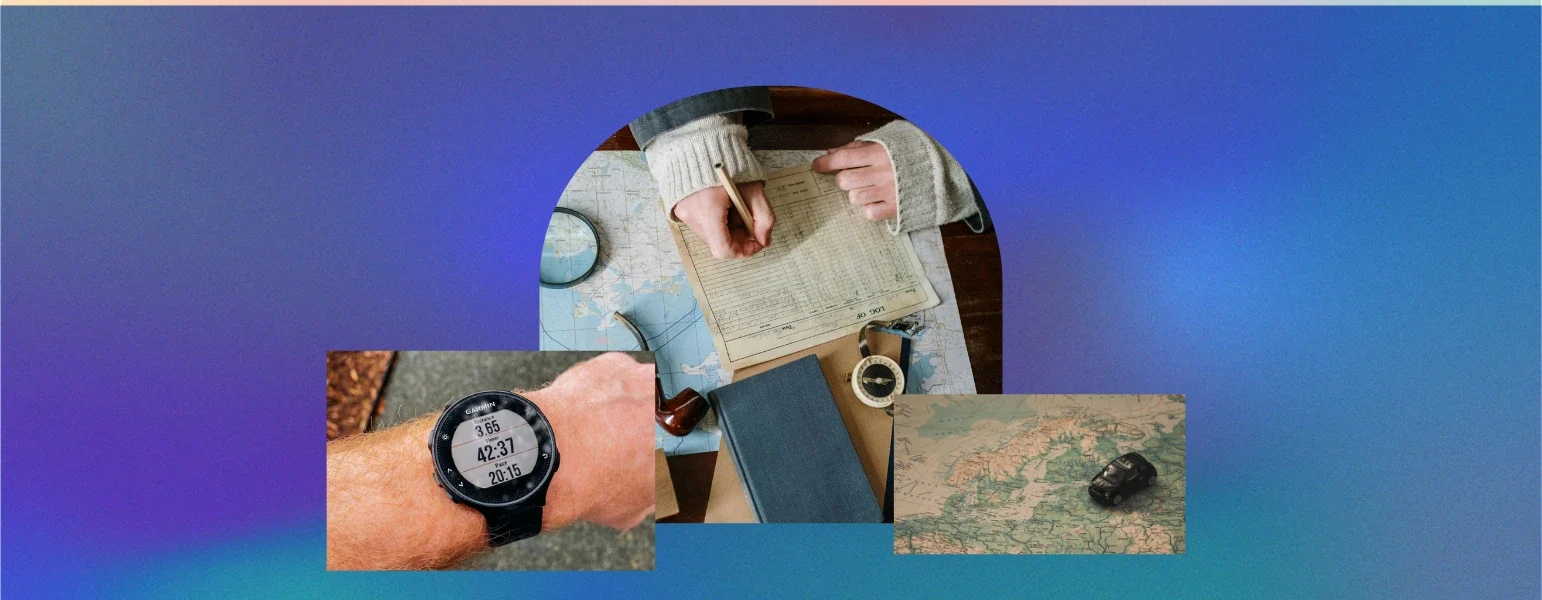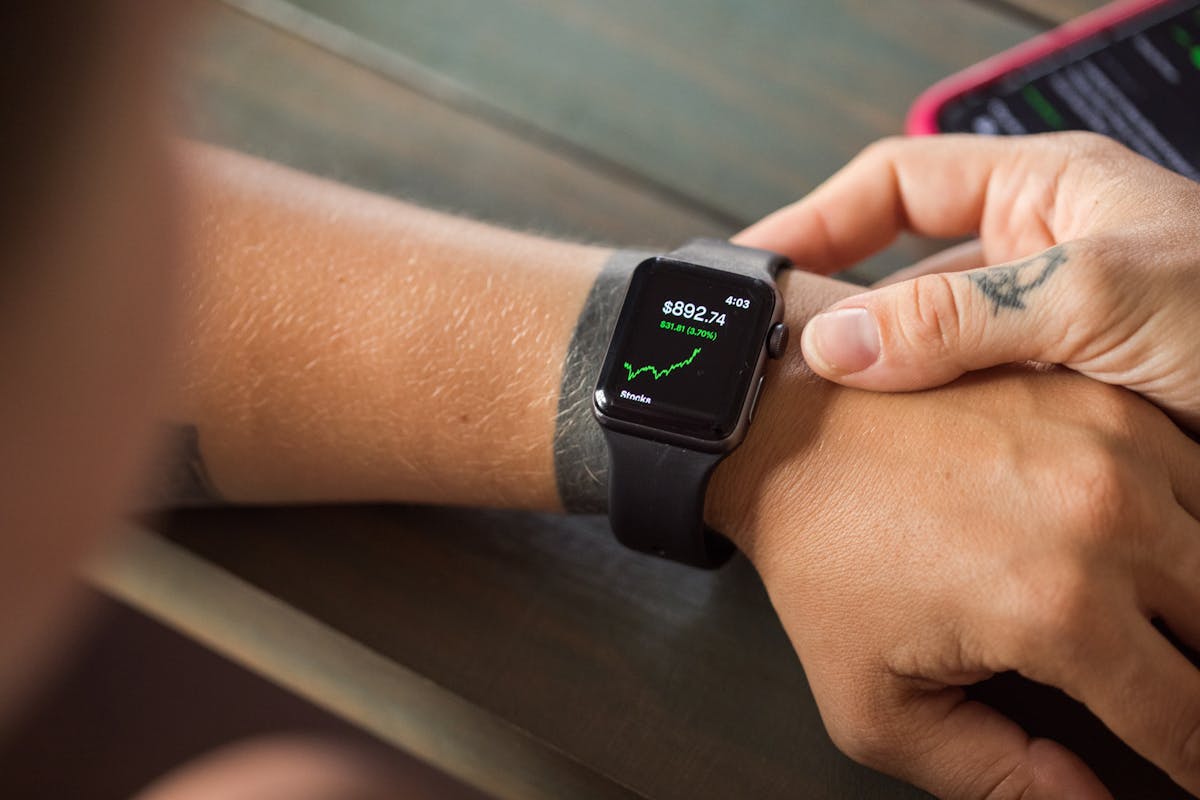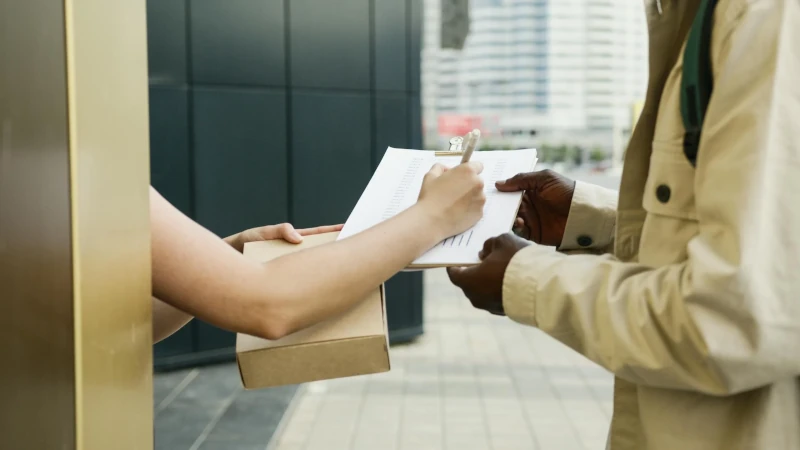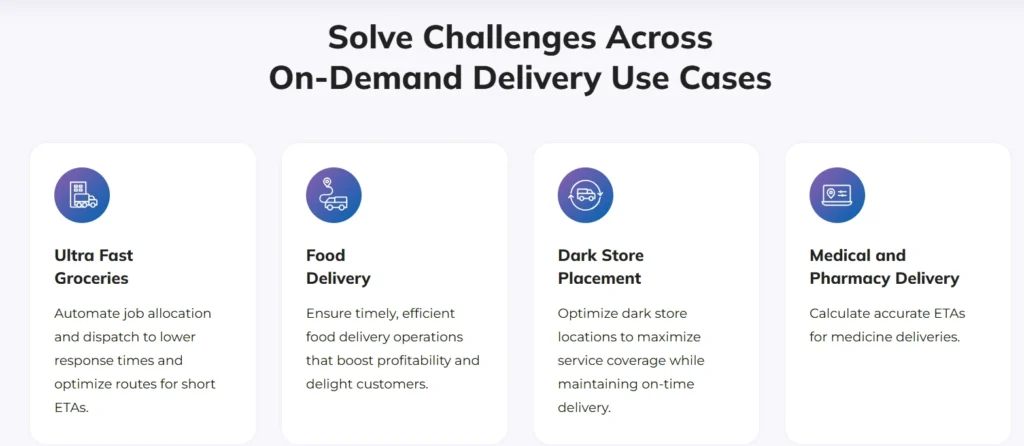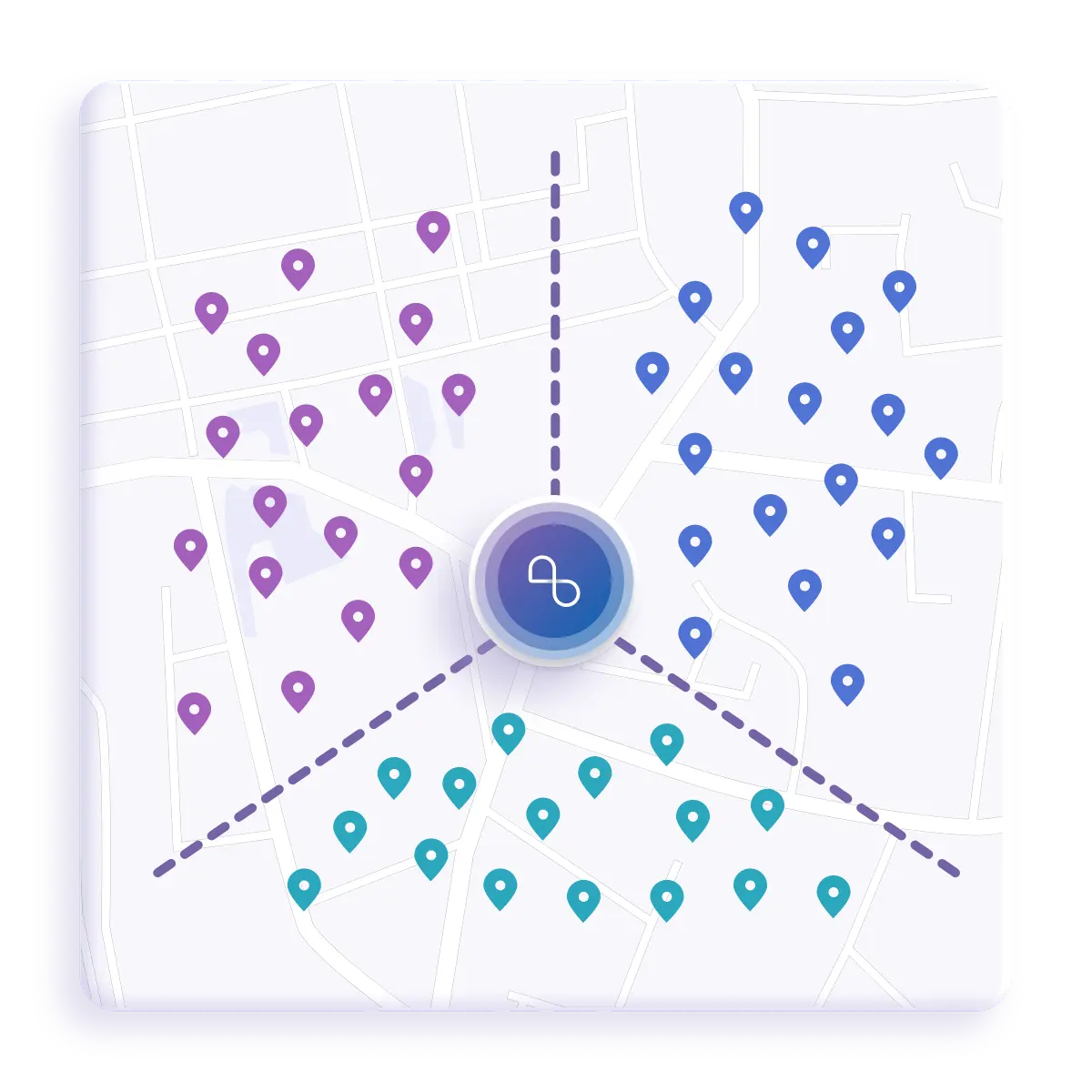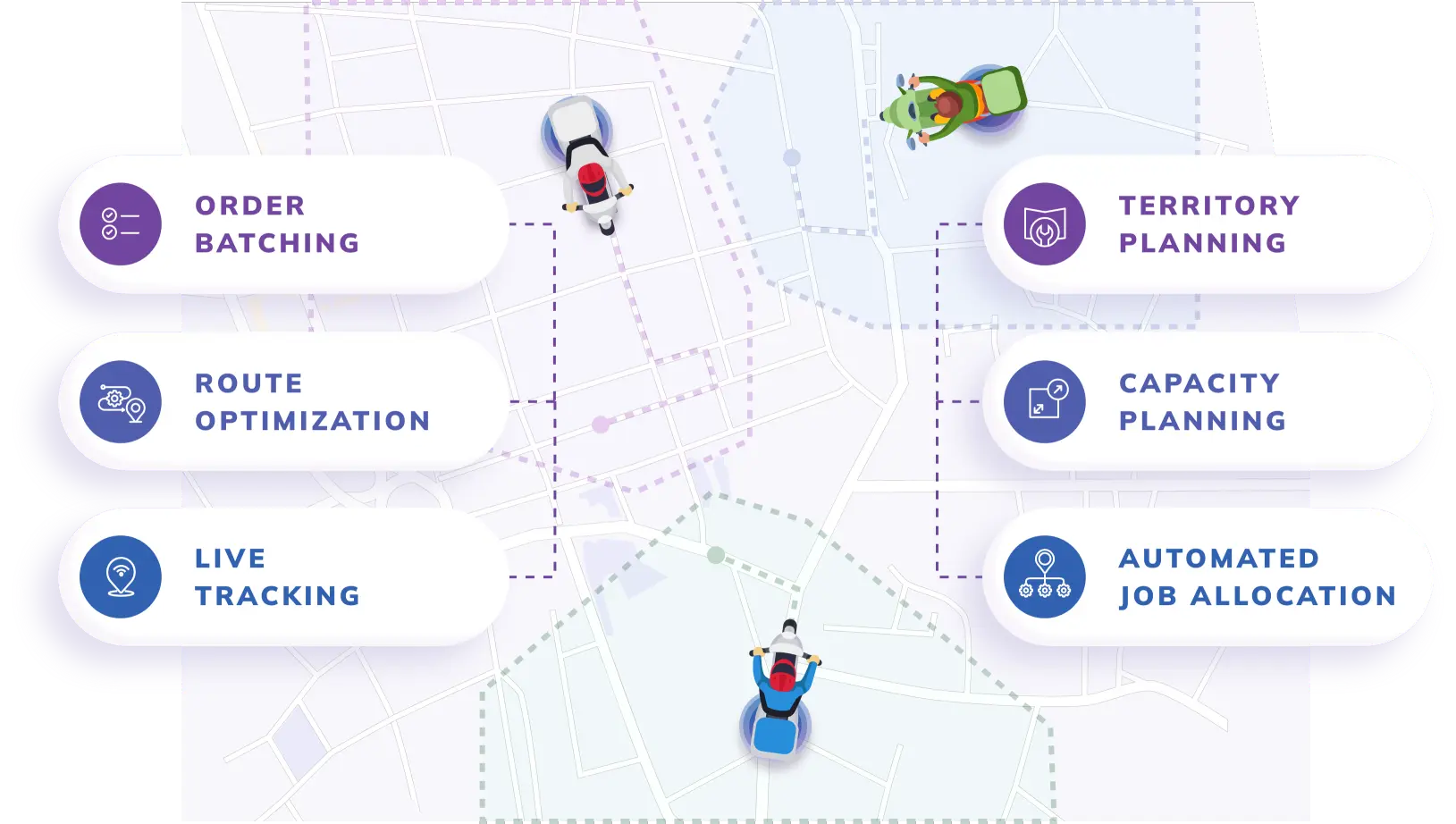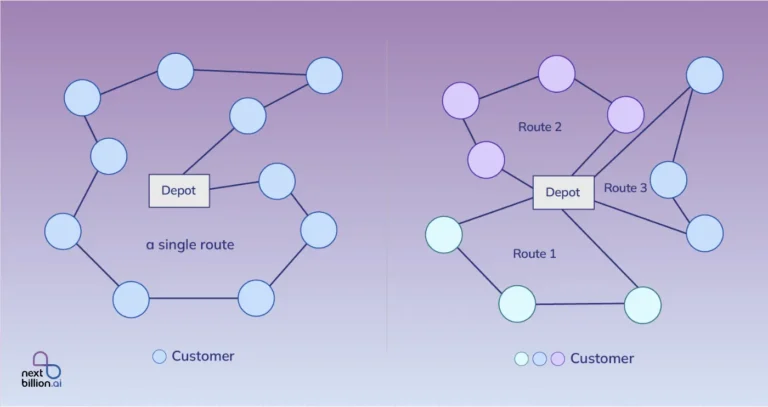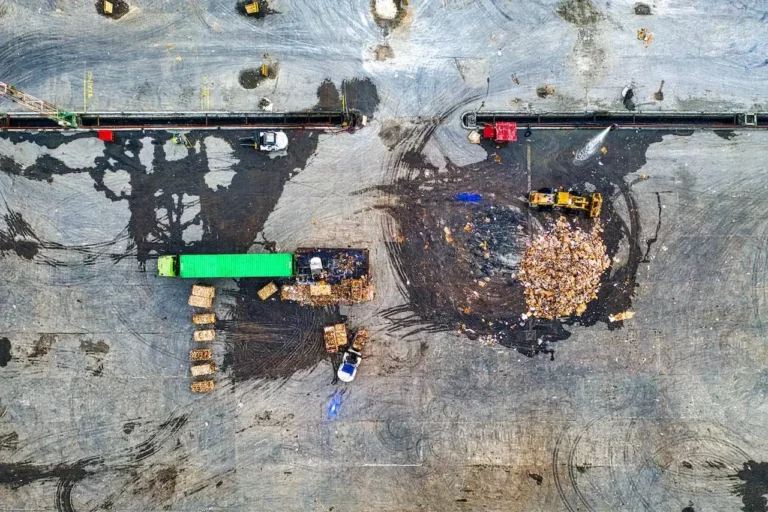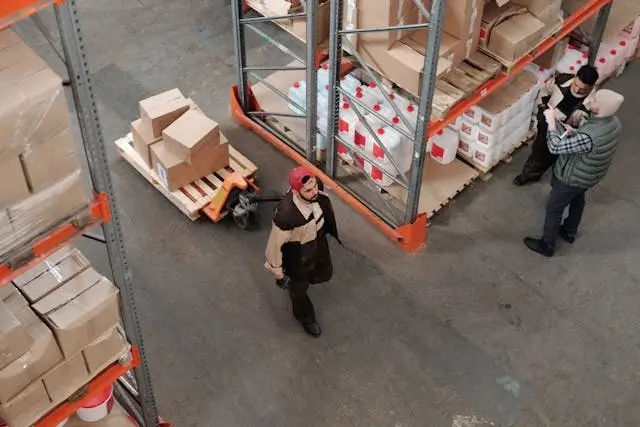
Table of Contents
On-demand services thrive on speed, efficiency, and accuracy in the fast-paced world of today. Smart route planning is essential for businesses to meet client expectations, whether they are involved in ride-hailing, food delivery, or e-commerce logistics. The use of virtual borders driven by GPS, Wi-Fi, or cellular data to optimize routes and automate decision-making is known as geofencing.
On-demand platforms may guarantee smooth and economical service by using geofencing to predict high-demand areas, assign drivers more effectively, and dynamically modify routes. Geofencing is revolutionizing last-mile logistics and urban mobility for businesses as technology advances, making every journey quicker and more intelligent.
What is Geofencing?
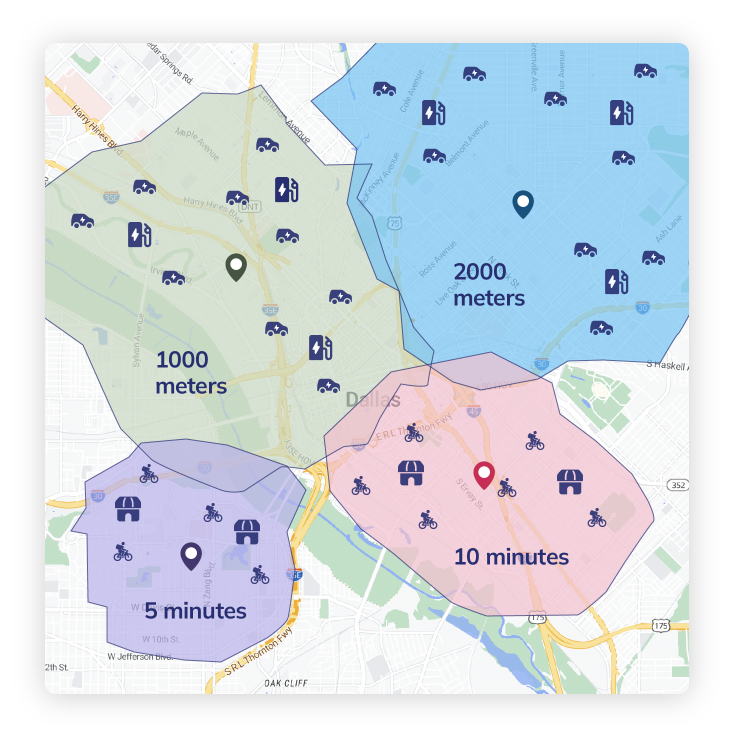
By creating a virtual boundary around a geographical area, geofencing technology makes location-aware research possible. Depending on the geofencing application, a smartphone can detect when someone enters or exits a geofenced region. Each of these occurrences can cause an action to be taken. Sending a link to a mobile poll where participants are questioned about their present experience is one example of such an occurrence. The strategy can also be used to deliver any study materials, such as experimental tasks or interventions, that can be posted on a website connected to the notice.
Based on geolocation technology, geofencing creates virtual barriers around designated areas. Geofencing is mostly used to inform fleet managers of occurrences occurring outside of permitted zones, to indicate whether a particular action is permitted or prohibited depending on the location, or for data analytics purposes.
Benefits of Geofencing
How might geofencing benefit your marketing efforts, and what about it excites marketers? The five main advantages are as follows:
1. Improved Focus
Being able to hyper-target prospects will allow you to engage them with timely and relevant messaging in addition to reaching them at the appropriate time and location.
You’re significantly more likely to engage your prospects if you target people in a certain geographic area and narrow that area down by particular targeting criteria. In the Starbucks example given above, a marketer would target a particular user demographic with the “cake pop” messaging rather than sending it to every Jane or John Doe who happened to stroll by.
2. Efficiency of Spending
Your engagement rates increase when your ads are sent at the appropriate time and location and are hyper-targeted. Using geofencing allows you to spend more money on prospects who are most likely to act and less on those who are not.
3. Better Information Gathering
You’ll have access to a wealth of useful data metrics after geofencing is put into place, including information on which physical locations are doing better and which target market is more engaged. Additionally, you can examine stay durations, messaging efficacy, and traffic patterns (the times when people are in or around your places).
Businesses may enhance user experience, boost engagement, and gain a deeper understanding of user behavior by merging this gathered data with online activity, purchase data, and web browsing habits. Customized follow-up messages can be created by targeting people who have visited specific sites in the past using the same information.
4. Tailored Client Experience
You can customize the client experience with geofencing. You can tailor your advertising to the demographics of the local population if you’re marketing to a particular area.
5. An edge over competitors
Think about where your clients are likely to be as well as your real location when deciding where to place your virtual barrier. Pro tip: These might not be identical all the time.
Many large brands have had great success with this strategy. Why? Because geofencing makes it possible to attract potential customers away from rivals.
How does geofencing work?
- Route planning software and devices with GPS and RFID (Radio Frequency Identification) capabilities can be used with geofencing. This is how geofencing operates:
- Using GPS-enabled software, a fleet manager creates a virtual boundary around a certain address or location.
- The manager’s enterprise route dispatch software solution is linked to the assigned driver’s smartphone app or GPS-enabled device.
- The driver enters the virtual geofence that has been built up around the customer’s location while on a dispatched route.
- The driver initiates one or more automatic actions, such as creating arrival time stamps or sending the customer an SMS message, when they enter or exit the designated geofence.
With the aid of geofencing, you can monitor your drivers and spot any delays, missed appointments, unusually short service durations, unplanned breaks, etc. Automating the check-in and check-out procedures, which can take an hour each day for each driver, is another way to save time.
Route Planning in On-Demand Services
An on-demand delivery platform, often known as software, is a collection of tools that enables a company to accept online orders and deliver its goods quickly using an extremely effective transportation system.
Let’s examine some of the salient features that distinguish On-demand Delivery Software:
Factor 1: Instantaneous dispatch

One of the key characteristics of on-demand delivery management software is its ability to provide immediate dispatch. When an order is placed, this feature ensures that it is promptly assigned to the delivery person who is nearest to the consumer. By cutting down on idle time and streamlining the supply chain, this guarantees that client orders are fulfilled on schedule.
Factor 2: Real-time monitoring

Customers and service providers can see the delivery process in real time thanks to this functionality. Businesses benefit from improved operational visibility through real-time tracking, which allows them to monitor the status of each delivery, spot potential bottlenecks, and make informed decisions immediately.
Factor 3- Route optimization

This feature uses complex algorithms to determine the best routes for delivery personnel, accounting for elements such as order priority, delivery windows, and traffic conditions.
Factor 4- Communication with customers

Consumers today want to know when their orders will be delivered. If there is a delay, they expect new ETAs. Maintaining communication with the customers eliminates needless impact to the user’s happiness. Offering first-rate customer service is advantageous.
Factor 5- Proof of delivery

The resources must confirm that the shipment was delivered to the customer in satisfactory condition. Signatures and photographs are the most regularly used proof of delivery. Consumers anticipate receiving their purchases in the same condition as when they were shipped.
For on-demand businesses to provide quick, effective, and reasonably priced rides or deliveries, route planning is crucial. In order to find the quickest or shortest route, real-time optimization is done utilizing AI-driven algorithms that examine weather, traffic, and road closures.
By selecting the closest available driver or delivery partner based on factors like proximity, vehicle type, and anticipated trip time, dynamic dispatching plays a critical role. This method is used by ride-hailing services such as Uber and Lyft to rapidly connect drivers and passengers.
By establishing virtual boundaries that set off automatic processes, including warning drivers when they approach a high-demand area or allocating jobs depending on location, geofencing improves route planning even more. With meal delivery services like Swiggy, where drivers get pickup alerts as they get closer to a restaurant, this is especially helpful.
Additionally, by combining several deliveries into a single journey, multi-stop route design maximizes efficiency while cutting down on fuel expenses and travel time. This technique is used by services like Amazon Flex to guarantee that shipments are delivered in the most effective sequence possible.
By predicting high-traffic regions and examining historical demand trends, predictive analytics also plays a big part in route optimization. This enables on-demand platforms to apply surge pricing in geofenced zones during peak hours and pre-position drivers in key locations.
Improved driver efficiency, reduced operating expenses, increased customer satisfaction, and quicker delivery are all advantages of optimized route design. On-demand services can optimize speed, accuracy, and overall performance by utilizing AI, geofencing, and predictive analytics.
How geofencing Improves Route Planning for On-Demand Services
On-demand service route planning is greatly improved by geofencing, which uses cellular data, GPS, Wi-Fi, or RFID to establish virtual boundaries around particular areas. This technology increases service efficiency, minimizes delays, and optimizes routes.
The ability to optimize routes in real time is one of the main advantages of geofencing. On-demand services can dynamically modify routes in response to real-time traffic data, road closures, and evolving conditions by erecting geofences around high-demand locations. For example, to ensure timely deliveries. Food delivery services like Uber Eats or DoorDash can reroute drivers to avoid congestion.
Automated work allocation and dispatching is another significant benefit. The system can automatically assign the closest available driver, update anticipated arrival times, or notify consumers about the status of their deliveries when a delivery driver or service provider enters a geofenced region. For ride-hailing services like Uber and Lyft, where drivers and passengers are effectively matched in certain zones, this is especially helpful.
Additionally, geofencing improves the planning of multi-stop routes, which is essential for delivery services that handle several orders in a single trip. Platforms such as Amazon Flex and Instacart can optimize routes for efficiency, lowering fuel costs and trip distance, by strategically placing geofences close to restaurants, warehouses, or client clusters.
geofencing is also essential for demand forecasting and predictive analytics. On-demand applications can determine high-traffic locations and modify route planning by examining past data. For instance, during peak hours, ride-hailing platforms can implement surge pricing in geofenced zones to encourage more drivers to serve high-demand areas, reducing wait times for passengers.
Lastly, by stopping illegal route deviations, geofencing improves security and operational control. Managers are notified if a driver deviates from the designated route, guaranteeing adherence to delivery procedures and lowering the possibility of fraud.
By facilitating automated dispatching, demand forecasting, multi-stop efficiency, dynamic route optimization, and security improvements, geofencing enhances route planning for on-demand services. Faster deliveries, reduced operating expenses, and a flawless client experience are the outcomes of this.
Nextbillion.ai on-demand delivery solution
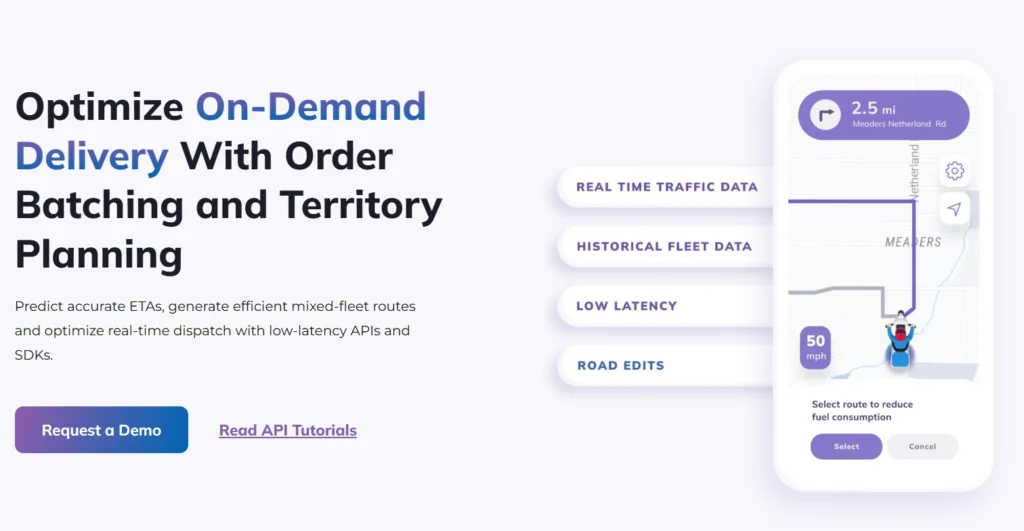
The best on-demand delivery with end-to-end last-mile alternatives is offered by the Nextbillion.ai platform. The performance and dependability of last-mile delivery can have a favorable or negative effect on the customer experience in the context of on-demand services.
To be competitive, businesses need to implement cutting-edge last-mile technology that enhances order processing procedures and ETA forecasts. End-to-end last-mile solutions can enhance on-demand delivery in the following ways:
Enhance Your ETA Forecasts
Accurate Estimated Time of Arrival (ETA) forecasts are essential for ensuring customer satisfaction. Businesses employ weather predictions, traffic data, and real-time data analytics to provide precise ETAs with end-to-end last-mile solutions. Customers can now arrange their days in accordance with the delivery time.
When the delivery process is somewhat accurate, the clients feel more trustworthy. This raises the users’ degree of customer satisfaction.
Enhance Order Fulfillment Processes
Order fulfillment can be a difficult process, especially when there are a lot of delivery locations and a large number of orders. Cutting-edge last-mile technology optimises these processes by streamlining critical tasks like order picking, packing, and dispatching.
Additionally, these solutions guarantee optimal resource allocation, which lowers errors and speeds up the fulfillment process in every way.
Complicated Issues with Order Batching and Scheduling
One of the most challenging aspects of last-mile delivery is scheduling and batching orders. End-to-end last-mile solutions use advanced algorithms to rapidly fix these problems.
By analyzing factors like delivery windows, driver availability, and route optimization, these technologies may dynamically adjust batches and schedules to improve efficiency and shorten delivery times.
Reach Service Excellence Up to the Final Yard
To deliver outstanding service, every detail must be taken into account up until the last yard. Last-mile solutions ensure that every stage of the delivery process is efficient, from route planning to doorstep delivery. Features like real-time tracking, automated notifications, and easy communication between drivers and customers enable a better delivery experience.
These solutions may also effectively manage particular instructions and unforeseen changes, guaranteeing a smooth and appealing handoff at the last minute.
Solutions Mapping for All On-Demand Services
Efficient logistics and accurate mapping solutions are essential for guaranteeing timely and accurate delivery in the rapidly changing on-demand services sector.
The specialized mapping solutions offered by Nextbillion.ai can improve a number of on-demand businesses in the following ways:
Delivery of Food and Grocery
Batching and dispatching orders in real-time is necessary for managing food and grocery deliveries. Customers are reassured by sophisticated mapping systems that numerous orders can be appropriately organized, reducing delivery times and boosting efficiency.
With the help of nextbillion.ai’s technology, delivery drivers can select the most efficient routes, ensuring that customers will receive their orders on schedule.
Medical and Diagnostic Services
In the healthcare sector, time is crucial. Mapping systems make it possible to collect test samples early and effectively by determining the fastest routes and scheduling the ideal times for collection. The diagnosis process will proceed more swiftly, which is advantageous in emergency situations, and patients will experience shorter wait times as a result.
Delivery of Medicines and Pharmaceuticals
The medical and pharmacy delivery industries require precise delivery schedules. Exact Estimated Times of Arrival (ETAs) can be calculated using these sophisticated mapping systems, which account for factors like weather, traffic, and distance. This ensures that prescription medications and medical supplies reach patients and healthcare facilities on time.
Household Services
Cleaning, installation, and repair are examples of home services that need to be delegated to people with the necessary abilities. Mapping tools can expedite this process by matching service requests with the most qualified and experienced experts.
By guaranteeing that tasks are finished promptly and competently, this not only increases client happiness but also the efficiency of service delivery.
Services for Beauty
In the beauty and salon services sector, maximizing efficiency and customer happiness requires optimizing work schedules. Mapping solutions according to factors like location, service type, and stylist availability can enhance appointment scheduling. This reduces downtime and ensures that beauty professionals can serve more clients in a timely manner.
Delivery via Post and Courier
Accurate cost estimation and timely delivery are critical to the postal and courier sectors. Mapping methods improve cost forecasts by analyzing several factors, including parcel size, delivery speed, and distance.
Additionally, by optimizing delivery routes, these technologies ensure that goods reach their destinations on schedule while reducing fuel and operating costs.
The Solution to the difficulties and complexities of on-demand delivery provided by NextBillion.ai
In the fast-paced world of on-demand delivery, businesses encounter many obstacles. These difficulties may affect the business’s productivity and client satisfaction. Advanced technological solutions are required.
These issues will be addressed by Nextbillion.ai’s SDKs and APIs. They offer strong tools to improve service quality and expedite processes. Let’s examine the cutting-edge solutions offered by nextbillion.ai that are revolutionizing the on-demand delivery market.
Personalized Maps for Precise ETA Forecasts
With on-demand services, precise ETAs are essential. For a variety of use scenarios, NextBillion.ai’s solutions use ETAs produced by AI, ML, bespoke map data, and real-time traffic updates. Businesses can provide precise delivery timings by utilizing these technologies. Customers will be informed and happy with their delivery experience thanks to this.
Route Planning for Dispatch and Order Batching
Efficient order batching and dispatching are essential for handling large delivery quantities. Customized APIs and current GIS data are used by NextBillion.ai to improve order batching and delivery. Orders are shipped out faster with the help of these real-time multivariate analysis tools. This reduces the cost of shipping.
Route Optimization for Electric Vehicles
Because of their particular limitations, electric vehicles (EVs) need to optimize their routes. The algorithms developed by NextBillion.ai determine the quickest and most effective routes between several stations while taking intricate routing limitations and limits into consideration. This guarantees that EVs can deliver goods effectively, using less energy and producing more work.
Accurate Instruments for Adaptive geofencing
One effective technique for streamlining order distribution and fulfillment processes is dynamic geofencing. The APIs from NextBillion.ai build personalized geofences to improve delivery processes. These geofences provide effective work assignments and on-time deliveries by taking into account variables like vehicle type, historical traffic patterns, current traffic circumstances, and custom regulations.
A Suite of Tools to Build Your On-Demand Delivery Solution
Level Up ETA Prediction Accuracy
Ensuring service reliability requires improving the accuracy of ETA predictions. Accurate arrival times are provided by NextBillion.ai’s mapping APIs. Because of its accuracy, companies are able to schedule jobs, match drivers to orders, set up service time frames, determine costs, and ultimately improve unit economics.
Optimise Order Batching and Dispatch at Scale
Effective tools will be required for managing huge order requirements. Ultra-low latency APIs of NextBillion.ai make order batching and dispatching at scale less complicated. These technologies support companies in better asset utilisation, order management, and timely delivery.
Improve Last-Mile Efficiency with a Multi-Stop Route Planner
The complete NextBillion.ai system Route Optimization API creates optimal routes with different constraints for multiple vehicles, origins, and destinations, hence solving complex routing problems. To improve last-mile efficiency, this system also takes into account variables including shift timings, staff skill, delivery windows, number of deliveries/pick-ups, and vehicle capacity. It also permits unplanned stops.
Customise Routes as Per Fleet Vehicle Type
Different kinds of vehicles need different routing. The Distance Matrix and Route Optimization APIs from NextBillion.ai calculate arrival times for a variety of vehicles, such as cars, trucks, motorcycles, bicycles etc., These tools ensure safe and permitted routes by reflecting local traffic laws, ordinances, and fines.
Real-Time Tracking and Navigation
The Navigation SDK of NextBillion.ai provides real-time tracking, keeps track of ETA modifications, improves fleet visibility, and tracks job completion progress. Businesses can use this to get important insights regarding demand forecasting, deviations, preferred routes, and on-time performance.
Dynamic geofencing for Last-Mile Delivery Promises
The geofencing API of NextBillion.ai creates virtual perimeters around shop and warehouse sites to maximise delivery speed and time. These geofences improve job assignments by identifying regions that are accessible within a specified time span and taking into account the type of vehicle, past traffic patterns, current traffic conditions, and customised regulations.
Effective Order Allocation and Scheduling
Managing demand uncertainty requires effective order allocation and scheduling. NextBillion.ai’s large Distance Matrix API evaluates serviceability in real-time, identifies the best sequences of delivery, monitors resource availability, and assigns orders to the optimally situated rider/field agent.
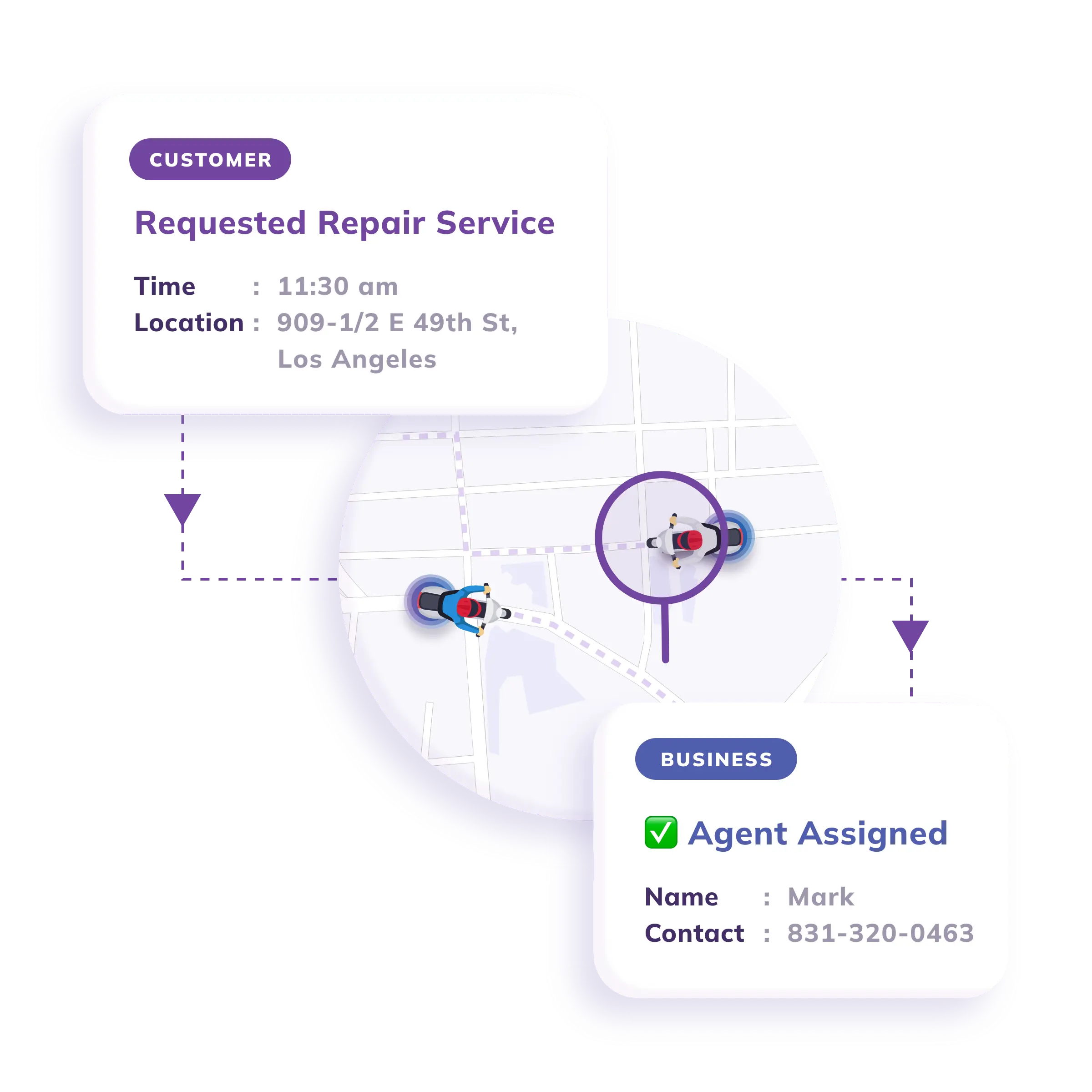
Conclusion
For on-demand services, geofencing has completely changed route planning, resulting in quicker, more intelligent, and more effective deliveries and transportation. Geofencing guarantees that drivers use the most effective routes while reducing delays and operating expenses by enabling real-time route optimization, automated dispatching, multi-stop efficiency, and predictive demand forecasting. Furthermore, its function in security and compliance enhances service accountability, prevents unwanted deviations, and offers an additional layer of dependability. Geofencing will be even more important in improving consumer satisfaction, streamlining last-mile logistics, and propelling the development of on-demand services as technology advances. In an increasingly fast-paced environment, companies who use geofencing will have a competitive advantage and guarantee smooth and effective service delivery.
About Author
Divya Nair
Divya is a dedicated Technical Content Writer with experience of two years in the industry. Her expertise spans various forms of writing, including blogs and website content.

